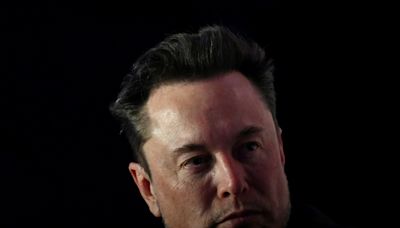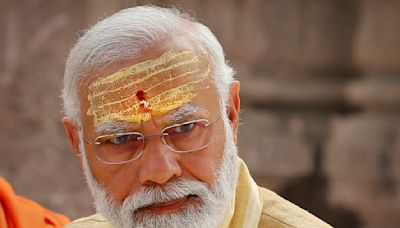Search results
India, officially the Republic of India (ISO: Bhārat Gaṇarājya), is a country in South Asia. It is the seventh-largest country by area; the most populous country as of June 2023; and from the time of its independence in 1947, the world's most populous democracy.
- dd-mm-yyyy
- Overview
- Land
- Relief
India shares borders with Pakistan to the northwest; with Nepal, China, and Bhutan to the north; and with Myanmar and Bangladesh to the east. The island country of Sri Lanka is situated some 40 miles (65 kilometres) off the southeast coast of India.
What are the oldest known civilizations of India?
The expansive alluvial plains of the Indus and Ganges (Ganga) river basins in India provided the environment and focus for the rise of two great phases of city life: the civilization of the Indus valley, known as the Indus civilization, during the 3rd millennium BCE; and, during the 1st millennium BCE, that of the Ganges.
What are the major holidays and festivals of India?
The major secular holidays are Independence Day (August 15) and Republic Day (January 26). The most popular religious festivals celebrated over the greater part of India are Vasantpanchami, in honour of Sarasvati, the goddess of learning; Holi, a time when traditional hierarchical relationships are forgotten and celebrants throw coloured water and powder at one another; Dussehra, when the story of the Ramayana is reenacted, and Diwali (Divali), a time for lighting lamps and exchanging gifts.
India, country that occupies the greater part of South Asia. India is made up of 28 states and eight union territories, and its national capital is New Delhi, built in the 20th century just south of the historic hub of Old Delhi to serve as India’s administrative centre. Its government is a constitutional republic that represents a highly diverse population consisting of thousands of ethnic groups and hundreds of languages. India became the world’s most populous country in 2023, according to estimates by the United Nations.
India’s frontier, which is roughly one-third coastline, abuts six countries. It is bounded to the northwest by Pakistan, to the north by Nepal, China, and Bhutan; and to the east by Myanmar (Burma). Bangladesh to the east is surrounded by India to the north, east, and west. The island country of Sri Lanka is situated some 40 miles (65 km) off the southeast coast of India across the Palk Strait and Gulf of Mannar.
The land of India—together with Bangladesh and most of Pakistan—forms a well-defined subcontinent, set off from the rest of Asia by the imposing northern mountain rampart of the Himalayas and by adjoining mountain ranges to the west and east. In area, India ranks as the seventh largest country in the world.
It is now generally accepted that India’s geographic position, continental outline, and basic geologic structure resulted from a process of plate tectonics—the shifting of enormous, rigid crustal plates over the Earth’s underlying layer of molten material. India’s landmass, which forms the northwestern portion of the Indian-Australian Plate, began to drift slowly northward toward the much larger Eurasian Plate several hundred million years ago (after the former broke away from the ancient southern-hemispheric supercontinent known as Gondwana, or Gondwanaland). When the two finally collided (approximately 50 million years ago), the northern edge of the Indian-Australian Plate was thrust under the Eurasian Plate at a low angle. The collision reduced the speed of the oncoming plate, but the underthrusting, or subduction, of the plate has continued into contemporary times.
The effects of the collision and continued subduction are numerous and extremely complicated. An important consequence, however, was the slicing off of crustal rock from the top of the underthrusting plate. Those slices were thrown back onto the northern edge of the Indian landmass and came to form much of the Himalayan mountain system. The new mountains—together with vast amounts of sediment eroded from them—were so heavy that the Indian-Australian Plate just south of the range was forced downward, creating a zone of crustal subsidence. Continued rapid erosion of the Himalayas added to the sediment accumulation, which was subsequently carried by mountain streams to fill the subsidence zone and cause it to sink more.
Asia. China. India may soon meet its crew on ship seized by Iran. Seventeen of 25 crew members on the Israel-linked ship seized over the weekend are Indian nationals. 5 hrs ago India. Iranian...
- India election 2024: Why it matters for the world
- Chhattisgarh: Security forces kill 29 Maoist rebels in India
- MSC Aries: India may soon meet its crew on ship seized by Iran
- India elections 2024: When are they, why do they matter and who can vote?
- BBC Film celebrates four films in official selection at Cannes Film Festival 2024
- Elon Musk to visit India for meeting with PM Modi
Apr 10, 2024 · India - The World Factbook. Explore All Countries. India. South Asia. Page last updated: April 10, 2024. Photos of India. view 34 photos. Introduction. Background. The Indus Valley civilization, one of the world's oldest, flourished during the 3rd and 2nd millennia B.C. and extended into northwestern India.
Mar 1, 2011 · 21 March 2023. India is the world's largest democracy and, according to UN estimates, its population is expected to overtake China's in 2028 to become the world's most populous nation. As a...
Jul 6, 2023 · Where is India? Outline Map. Key Facts. Flag. India, located in Southern Asia, covers a total land area of about 3,287,263 sq. km (1,269,219 sq. mi). It is the 7th largest country by area and the 2nd most populated country in the world.



